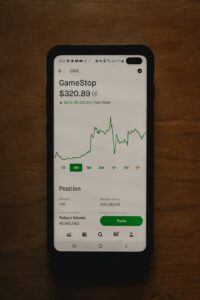How to Verify if Your Forex Broker is Truly Regulated in the US: A Step-by-Step Guide
Choosing a reliable and trustworthy forex broker is of utmost importance for any trader. With the vast number of brokers available in the market, it can be challenging to identify the legitimate ones from the fraudulent ones. One crucial factor that separates a reputable forex broker from the rest is its regulation status. In the United States, the forex market is highly regulated, and traders must ensure that their chosen broker is authorized to operate in the country. In this step-by-step guide, we will walk you through the process of verifying if your forex broker is truly regulated in the US.
Step 1: Check the NFA Membership
The National Futures Association (NFA) is the self-regulatory organization for the US derivatives industry, including the forex market. It is essential to ensure that your broker is a registered member of the NFA. You can easily verify this by visiting the NFA’s official website and using their Background Affiliation Status Information Center (BASIC) search tool. Enter your broker’s name or NFA ID number in the search bar to find their registration details. If your broker is not listed or has any disciplinary actions against them, it is a red flag, and you should consider looking for an alternative option.
Step 2: Check the CFTC Registration
The Commodity Futures Trading Commission (CFTC) is the federal agency that regulates the futures and options markets, including forex trading. All forex brokers operating in the US must be registered with the CFTC. To verify your broker’s CFTC registration status, you can visit the CFTC’s official website and search for the broker’s name or registration number in their Registration Status Information Center. If your broker is not listed or has any disciplinary history, it is a strong indication that they are not authorized to operate in the US, and you should avoid them.
Step 3: Verify the Broker’s License
In addition to being registered with the NFA and CFTC, forex brokers in the US must also hold a license from a state regulatory authority. Each state has its own regulatory body, such as the New York State Department of Financial Services or the California Department of Business Oversight. Check your broker’s website or contact their customer support to find out which state agency has licensed them.
Once you have identified the state regulatory authority, visit their official website and search for the broker’s name in their license database. Verify that the broker’s license is active and up-to-date. If there are any discrepancies or the license is not listed, it is a clear indication that the broker is not regulated in the US.
Step 4: Cross-Check with the SEC
Although the Securities and Exchange Commission (SEC) primarily regulates the stock market, it also plays a role in overseeing certain aspects of the forex market. While forex brokers are not required to be registered with the SEC, it is still a good idea to cross-check the broker’s name in the SEC’s database to ensure there are no regulatory actions or complaints against them.
Step 5: Research the Broker’s Reputation
Once you have completed the regulatory verification process, it is essential to conduct thorough research on the broker’s reputation. Look for reviews and feedback from other traders to gauge their experience with the broker. Pay attention to any negative reviews or complaints regarding withdrawal issues, platform stability, or customer support. Reputable brokers will have positive feedback and a history of satisfied clients.
In conclusion, verifying the regulatory status of your forex broker in the US is a crucial step in ensuring the safety of your funds and trading experience. By following this step-by-step guide, you can easily determine if your chosen broker is truly regulated and authorized to operate in the US. Remember to always prioritize regulation and choose a broker that meets the necessary regulatory requirements.






